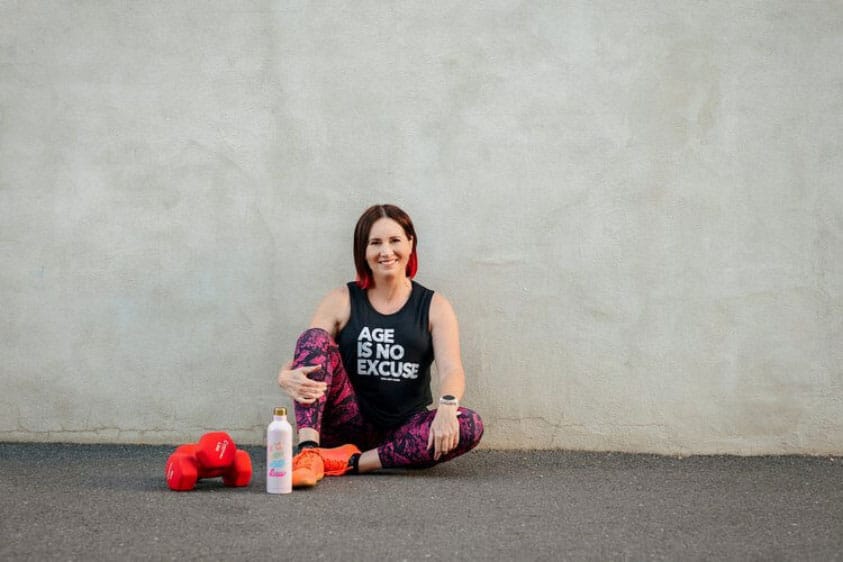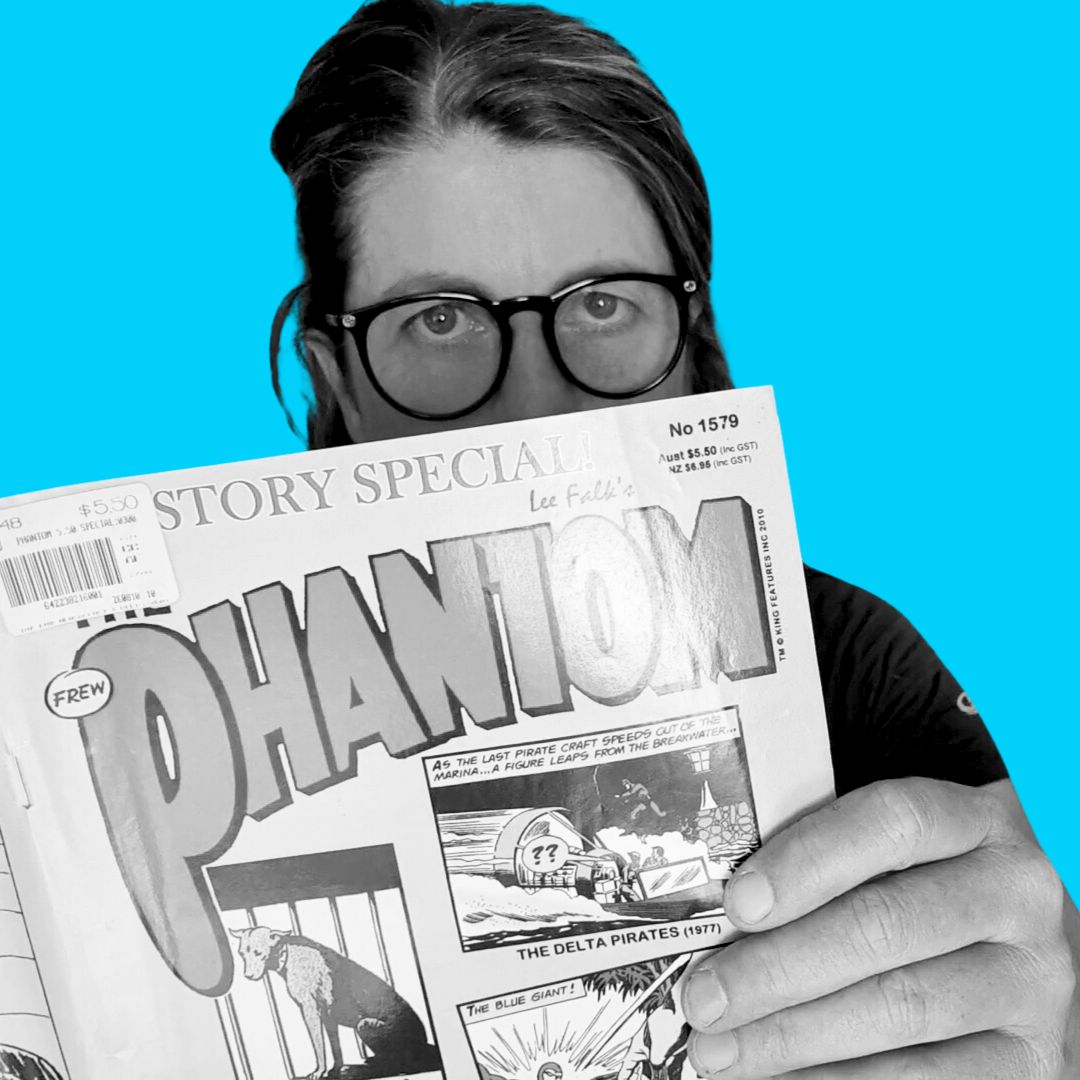“I’m Not a Risk-Taker”, She Said.
Most of the high-achieving people I know only take easy-to-manage risks. They act from a place of familiarity rather than fear.

The definition of a risk-taker
Is a risk-taker someone who takes action with…?
- Only easy-to-manage risks attached
- Only real-darn-scary risks attached
- Any risk attached.
Be bold and pick one of the answers above before you read on. I’ve got a risky story from Inside A Bold Mind and you may see the world differently after I share it with you.
Jo Parker is a long-time participant in Run Against Violence, yet it wasn’t until the beginning of this summer that Jo and I had our first chat via Zoom.
Early in our conversation, Jo mentioned that she wasn’t a risk-taker. It’s a phrase I hear women say with the frequency of an ingrained habit. I bundle it with the other feminine, self-deprecating comments like saying sorry too much and playing down achievements with the word “just”.
We went on to explore the storyline of Jo’s life. At 28, she packed her car, tucked her 18-month-old baby into her capsule and fled an unhealthy relationship. She travelled to a town 6 hours away; without a job, little savings and nowhere to live.
Jo spent the next 20 years rebuilding her life and career. She worked part-time at the local community centre and high school. When the opportunity arose, she returned to academic study, moving into research and finally lecturing.
In early 2021, Jo made another dramatic move.
Jo quit her role at the local university to go all-in on her health and fitness business. For six years, Jo had squeezed personal training and health coaching clients into tiny time slots before and after her academic day job. But, she yearned to help women of her age improve their health and fitness so they could get more out of life.
The university announced a round of voluntary redundancies in 2021. Despite the deep uncertainty of the COVID pandemic, Jo took the leap of faith into a full-time business.
I looked at my notepad as Jo talked, shaking my head in disbelief.
“Did you seriously say you’re not a risk-taker?” I asked.
“Well, I take risks, I guess, but not big ones.”
Sliding scale of risk
People label me a risk-taker because I step away from what others think is normal. From the outside, it looks like I am taking giant leaps of faith, but I’m not. There are three truths I have learned about taking risks that enable me to move forward rather than get bogged down with fear.
1: Every action we take has risk attached.
For instance, even simple tasks, like rising from bed in the morning, are risky. I could snag my foot on the sheets, causing me to whack my head on the side table and be seriously injured.
When most people call me a risk-taker they are referring to my extreme adventures. I think it’s because the risks there trigger people’s imaginations more than the everyday risks. Like on my solo trek in the Huayhaush mountains.
- It was my first time in the region, so there was a lot of guesswork involved in the planning; things could quickly go wrong.
- I’m unaccustomed to trekking at high altitudes, threatening altitude sickness and disorientation.
- I was a solo female in an isolated area where bandits are active and regularly commit armed robberies.
- I had to be self-sufficient, carrying all my supplies and tent. If I forgot, lost or broke something, it could be life-threatening.
- Trekking is technical, increasing the likelihood of severe injury and falls.

2: All risks can be plotted on a scale from easy-to-manage to real-darn-scary.
The risks attached to the sheet-snagging (say that fast five times) and Huayhuash examples are both life-threatening. However, the plot at different points on the scale of risk.
For me, sheet-snagging is an easy-to-manage risk, whereas the Huayhuash risks were real-darn-scary.
3: You are the person choosing where any risk gets plotted on that scale.
While I plot the risks in the Huayhuash as real-darn-scary, a local would be unlikely to do that. They are very familiar with the mountains, live at altitude, and traverse the trails often. To them, the risks on my list are either non-existent or easy to manage.

Make the extraordinary, ordinary
During adventures like the Huayhuash, it appears I’m taking some real-darn-scary risks. But in reality, I have moved that risk to the easy-to-manage end of the scale and then acted.
I do that by getting up close and personal with the adventure that I’m about to undertake. I buddy up with people who have been there before and ask loads of questions. I research, test and train until the extraordinary act feels commonplace and familiar.
I’m not alone in that approach. Most of the high-achieving people I know only take easy-to-manage risks. They act from a place of familiarity rather than fear.
Jo is the same and it was evident in her habits. She studies her subject, creates spreadsheets, plans and tests ideas. She seeks out people and resources that can contribute to her progress. She knows her strengths and plays to them.
All that work changes how Jo perceives the risks involved. She can often become so familiar with the risk that she no longer sees or feels its existence. At that point, the words ‘I’m not a risk taker’ may pop out of her mouth. But you and I both know that’s not true.
Jo is a risk-taker, and she is a master at doing it.
~ “If you want a guarantee, buy a toaster.” ~
Clint Eastwood
Activities to improve your risk-taking
During Days 12 to 15 of the Route To Unstoppable I share the steps I take to reduce the scale of risk associated with an action. There are journaling activities you can do with each step to practice the principles outlined.
12 – Define Your Impossible
Life has physical, mental and emotional boundaries of possibility. When we are inside those boundaries, things outside those boundaries are impossible. Today we define your impossible.
13 – What Already Exists?
During the next three days of Route to Unstoppable, you will learn three life-changing questions. These questions are the key to breaking the bond between risk and fear. The first question is What Already Exists?
14 – What Could Go Wrong?
How many times in your life has the following scenario happened? You’re planning to do something for the first time. When you think about doing that thing, a whole heap of what-if questions start firing in your brain.
In today’s activity, you start listing the risks.
15 – How Will You Manage The Risk?
Too often we stop at the question; “What could go wrong?” and fail to ask the third vital question in breaking the bond between risk and fear. Today you’ll write strategies for managing the risk.



